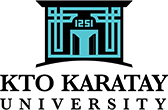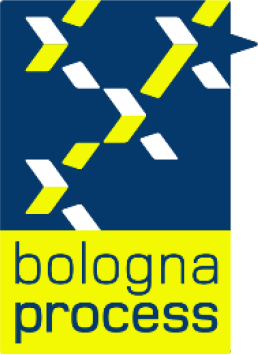Graphic Design
Course Details

KTO KARATAY UNIVERSITY
Faculty of Fine Arts and Design
Programme of Graphic Design
Course Details
Faculty of Fine Arts and Design
Programme of Graphic Design
Course Details

| Course Code | Course Name | Year | Period | Semester | T+A+L | Credit | ECTS |
|---|---|---|---|---|---|---|---|
| GRA157 | Perspective | 1 | Autumn | 1 | 2+2+0 | 3 | 5 |
| Course Type | Elective |
| Course Cycle | Bachelor's (First Cycle) (TQF-HE: Level 6 / QF-EHEA: Level 1 / EQF-LLL: Level 6) |
| Course Language | Turkish |
| Methods and Techniques | - |
| Mode of Delivery | Face to Face |
| Prerequisites | - |
| Coordinator | - |
| Instructor(s) | Assoc. Prof. Özlem TEKDEMİR DÖKEROĞLU |
| Instructor Assistant(s) | - |
Course Content
From two dimensions to two dimensions measured transfer work and the work of transferring the tonal differences are made.
Objectives of the Course
On the plane of two-and three-dimensional shapes are perspective views in obtaining the desired shading and perspective views of elements used in the positioning direction and the length is to teach how quick drawings.
Contribution of the Course to Field Teaching
| Basic Vocational Courses | |
| Specialization / Field Courses | |
| Support Courses | X |
| Transferable Skills Courses | |
| Humanities, Communication and Management Skills Courses |
Relationships between Course Learning Outcomes and Program Outcomes
| Relationship Levels | ||||
| Lowest | Low | Medium | High | Highest |
| 1 | 2 | 3 | 4 | 5 |
| # | Program Learning Outcomes | Level |
|---|---|---|
| P6 | F Ability to think and express in two and three dimensions. | 5 |
| P10 | J Ability to use technologies, techniques and innovations in the field of design. Ability to use computer software and information and communication technologies effectively for design. | 5 |
| P12 | L Ability to gain accurate information about the structure of field materials, tools and machines and to use them. | 5 |
Course Learning Outcomes
| Upon the successful completion of this course, students will be able to: | |||
|---|---|---|---|
| No | Learning Outcomes | Outcome Relationship | Measurement Method ** |
| O1 | To be able to think in two and three dimensions. | P.6.1 | |
| O2 | To be able to see / perceive and interpret two / three dimensional objects. | P.6.2 | |
| O3 | To be able to transfer the form to the second dimension and the two-dimensional shape to the third dimension (form). | P.6.3 | |
| O4 | To be able to express a thought, a concept or a phenomenon creatively through visual means. | P.6.4 | |
| O5 | To be able to express the lateral surfaces of three-dimensional objects (side, front, bottom, top, etc.) with two-dimensional lines. | P.6.6 | |
| O6 | To be able to use technical drawing and similar details in line with the need / ability to reflect them to their designs. | P.10.3 | |
| O7 | To be able to percepate and problem solving, technical application skills. | P.10.4 | |
| O8 | To be able to gain accurate information about the tools and equipment used in three-dimensional shaping of the graphic design product and the ability to use them. | P.12.1 | 1,3,7 |
| O9 | To be able to use the elements of time and space effectively while making the graphic design product three-dimensional | P.12.2 | 1,3,7 |
| O10 | To be able to design products in the desired size and volume. | P.12.3 | 1,3,7 |
| ** Written Exam: 1, Oral Exam: 2, Homework: 3, Lab./Exam: 4, Seminar/Presentation: 5, Term Paper: 6, Application: 7 | |||
Weekly Detailed Course Contents
| Week | Topics |
|---|---|
| 1 | Meet the course's aim, teaching, learning and control methods, testing and assessment methods and student notes the formation of the disclosure |
| 2 | Perspective of the history, definition, importance and types of projection used in obtaining a perspective view. |
| 3 | Parallel with the right-oblique projection method comprising obtaining a |
| 4 | Curved plane curves with parallel projection method to obtain the |
| 5 | That consists of a parallel-orthogonal projection method to obtain |
| 6 | Parallel-orthogonal projection method to obtain perspective view of the plane curves. |
| 7 | Obtained with parallel projection method in infinite and finite perspective shading done according to the light source. |
| 8 | Conic projection essential elements of the introduction of the horizon in |
| 9 | Perspective view of the conical projection method to obtain the plane curves. |
| 10 | Application studies. |
| 11 | Conic projection obtained by the method in perspective view; direction and the presence of the actual length and placement of the elements in |
| 12 | Conic projection was obtained by the method according to the light source at infinity in perspective shading done. |
| 13 | Finite perspective conic projection obtained by the method according to the light source modified shading. |
| 14 | Perspective conic projection obtained by the method of water and obtain the reflection on the mirror surface. |
Textbook or Material
| Resources | Onat, Esen. Architectural Perspective and Shadow in Perspective. Yapı Endüstri M. Publications, Istanbul, 1993 |
| Onat, Esen. Perspective and Perspective Shadow Drawing, Güven Kitabevi Publications, Ankara, 1975. | |
| Basic Art Education. Tiglat Matbaacılık. Istanbul. Öztuna, Y., 2007 |
Evaluation Method and Passing Criteria
| In-Term Studies | Quantity | Percentage |
|---|---|---|
| Attendance | 14 | - |
| Practice | 14 | - |
| Homework | - | - |
| Presentation | - | - |
| Projects | - | - |
| Midterms | 1 | 40 (%) |
| Final Exam | 1 | 60 (%) |
| Total | 100 (%) | |
ECTS / Working Load Table
| Quantity | Duration | Total Work Load | |
|---|---|---|---|
| Course Week Number and Time | 14 | 5 | 70 |
| Out-of-Class Study Time (Pre-study, Library, Reinforcement) | 14 | 3 | 42 |
| Midterms | 1 | 4 | 4 |
| Quiz | 0 | 0 | 0 |
| Homework | 4 | 4 | 16 |
| Practice | 3 | 5 | 15 |
| Laboratory | 0 | 0 | 0 |
| Project | 0 | 0 | 0 |
| Workshop | 0 | 0 | 0 |
| Presentation/Seminar Preparation | 0 | 0 | 0 |
| Fieldwork | 0 | 0 | 0 |
| Final Exam | 1 | 5 | 5 |
| Other | 0 | 0 | 0 |
| Total Work Load: | 152 | ||
| Total Work Load / 30 | 5,07 | ||
| Course ECTS Credits: | 5 | ||
Course - Learning Outcomes Matrix
| Relationship Levels | ||||
| Lowest | Low | Medium | High | Highest |
| 1 | 2 | 3 | 4 | 5 |
| # | Learning Outcomes | P6 | P10 | P12 |
|---|---|---|---|---|
| O1 | To be able to think in two and three dimensions. | 5 | - | - |
| O2 | To be able to see / perceive and interpret two / three dimensional objects. | 5 | - | - |
| O3 | To be able to transfer the form to the second dimension and the two-dimensional shape to the third dimension (form). | 5 | - | - |
| O4 | To be able to express a thought, a concept or a phenomenon creatively through visual means. | 5 | - | - |
| O5 | To be able to express the lateral surfaces of three-dimensional objects (side, front, bottom, top, etc.) with two-dimensional lines. | 5 | - | - |
| O6 | To be able to use technical drawing and similar details in line with the need / ability to reflect them to their designs. | - | 5 | - |
| O7 | To be able to percepate and problem solving, technical application skills. | - | 5 | - |
| O8 | To be able to gain accurate information about the tools and equipment used in three-dimensional shaping of the graphic design product and the ability to use them. | - | 5 | - |
| O9 | To be able to use the elements of time and space effectively while making the graphic design product three-dimensional | - | - | 5 |
| O10 | To be able to design products in the desired size and volume. | - | - | 5 |
